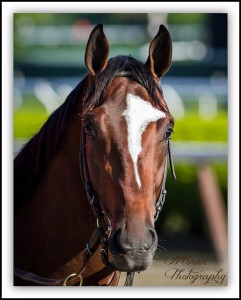 Saturday saw another Triple Crown dream come to an end as the popular colt California Chrome failed to show his usual verve and went down to defeat as have so many other hopefuls over the last 36 years. All of the post race drama took the spotlight off the winning horse Tonalist, a horse which epitomizes the pedigree cross highlighted in Breeding by Design. If you follow Tonalist’s male line you find his great grandsire is A. P. Indy. This male line is doing very well as witnessed by the fact that all of the winners of the Triple Crown races this year are sired by sons of Pulpit who is a son of A. P. Indy.
Saturday saw another Triple Crown dream come to an end as the popular colt California Chrome failed to show his usual verve and went down to defeat as have so many other hopefuls over the last 36 years. All of the post race drama took the spotlight off the winning horse Tonalist, a horse which epitomizes the pedigree cross highlighted in Breeding by Design. If you follow Tonalist’s male line you find his great grandsire is A. P. Indy. This male line is doing very well as witnessed by the fact that all of the winners of the Triple Crown races this year are sired by sons of Pulpit who is a son of A. P. Indy.
A. P. Indy traces down his female line to Cluster Mare Missy Baba who is his 4th dam. Missy Baba is also the 4th dam of Tonalist himself. This is a classic case of the sire line reinforcing the direct female family as put forth in my book. This is one of the proven ways to create the pedigree pattern that often leads to Cluster mares. Not only is the pattern likely to produce a cluster mare, but classic winners often exhibit the same pattern. In this case it is the classic winner that is the result, however if Tonalist were to have a full sister she might turn out to be a Cluster Mare.
There is much to like about the pedigree of Tonalist but the most important tidbit of information coming from his classic win in the Belmont is that it solidifies the position of his sire Tapit as the emerging leading sire in North America. One could then conclude that Tapit’s sire Pulpit is also a horse that needs careful evaluation as a sire of sires. After all it was one of his unheralded son’s Lucky Pulpit that sired California Chrome. Check out the pedigree of Tonalist here.
Something more important can be garnered from this year’s Belmont and the ill advised losing rant by California Chrome’s co-owner Steve Coburn. I was advising Edurado Gaveria the breeder of Real Quiet, and was there when his Triple Crown dreams went down by the closest of noses. However, Mr. Coburn’s rant is not what is important. What is important is what could be called “The Decline and Fall of the American Thoroughbred.” One of the reasons I developed this web site is so that I can say whatever I want about the Thoroughbred without someone else editing it or having it in any way censored.
There is nothing wrong with the Triple Crown races as they are now constituted. The problem lies in how the American Thoroughbred horse is bred and trained. To begin most of the American thoroughbreds are not bred to run! They are bred for the Market! That in itself is a big problem. Just think how differently you would breed horses if you couldn’t sell them and had to race them all yourself. So let’s begin to examine American Racing both in the past and present and try to get an idea as to why the American Thoroughbred is weakening.
I’ve been involved in Racing for 60 years now, but I started as a fanatical racing fan. When I graduated from High School in 1959 at age 17 I was five feet tall and weighed 100 pounds. I wanted to be a Jockey. However, I grew one foot during the next 14 months and my dreams of being a Jockey and winning the Kentucky Derby went down the proverbial drain. At that time my Uncle Nick was the Chauffer for Louis E. Wolfson the owner of Harbor View Farm and later the breeder of Triple Crown winner, Affirmed. Uncle Nick placed all of Mr.Wolfson’s bets which were very large. Quite a few times in a week Uncle Nick was at Aqueduct or Belmont to make the wagers. Whenever he went on the weekend I would go along and sit in Harbor View Farm’s box seat and be tutored by Burly Parke and Lucien Lauren on the intricacies of Thoroughbred Racing. At the time Lucien Lauren had a public stable and it would be another 12 to 13 years before Riva Ridge and Secretariat fell into his care.
 In those days my Favorite horse was Round Table, who by today’s standards was a mighty animal indeed. Between May 30th and November 1st of his three-year-old year he started 11 times and won all 11. Divide 11 races into the 154 days the dates cover and you realize Round Table ran every 2 weeks for 5 months and won every race. Three of those wins were over 1 ¼ miles and two of those races were against older horses (Hollywood Gold, and Hawthorne Gold Cups). The final 1 ¼ mile race was the American Derby against his own age group. During his career Round Table carried 130 pounds or more 25 times and won 17 of those races. Career Totals-66 Starts 43 wins and world record earnings. When was the last time you saw a horse carry 130 pounds? (Maybe 15 years ago).
In those days my Favorite horse was Round Table, who by today’s standards was a mighty animal indeed. Between May 30th and November 1st of his three-year-old year he started 11 times and won all 11. Divide 11 races into the 154 days the dates cover and you realize Round Table ran every 2 weeks for 5 months and won every race. Three of those wins were over 1 ¼ miles and two of those races were against older horses (Hollywood Gold, and Hawthorne Gold Cups). The final 1 ¼ mile race was the American Derby against his own age group. During his career Round Table carried 130 pounds or more 25 times and won 17 of those races. Career Totals-66 Starts 43 wins and world record earnings. When was the last time you saw a horse carry 130 pounds? (Maybe 15 years ago).
My first point is this, how can you have a sport with no hero’s? I followed every race in which Round Table was entered. I wrote his Bio in the Great Thoroughbred Sires of the World. What do you think the odds would be of my sitting here writing this to you if there had been no Round Table? The first problem with Thoroughbred Racing is that its hero’s are retired to stud too early. You might say it is penny wise and pound foolish. A lot of money is to be made with commercial stallions, but only if there is a thriving racing sport. A diminishing racing industry means the disappearance of high priced stallions. Just a few years ago the United States stood the 5 top commercial stallions. Last year in 2013 not one of the 5 top commercial stallions stood in the United States. I hate to tell you this dear readers but we are Bastardizing the American Thoroughbred.
Why? The answer is obvious, greed! It’s almost the same as inflating the dollar. Don’t make the dollar your god if you’re going to debase it. Which we are doing! A further example of greed destroying the American Thoroughbred is the use of drugs. First it was steroids and now Lasix. Here is a little story which is very revealing.
In 2000 I retired as a General Manager with American Airlines to go back to the farm and raise Thoroughbreds. I wanted to be hands on because I wanted to see if how the horse is raised contributes to his success on the racecourse. I found out that it does. To do this I managed my good friend’s Honey Acres Farm in Maryland. Alan S. Kline my friend flew in one of the best farriers in Kentucky every 5 weeks to do the horses feet. This took about two days and I always held the horses while the farrier trimmed their feet. So, for two days I talked to the blacksmith who had spent years at the racetrack and who turned out to be a treasure trove of information.
One of the topics of conversation was drugs in particular steroids. The farrier related that he had seen a horse come in from France (where he couldn’t win) looking like a skinny little deer. Five months later the horse looked like Secretariat and went on to become Horse-of-the-year. How did this horse make such a dramatic turn around. Can’t be proven, but my guess would be steroids. Then there was Big Brown! I was a big fan of Big Brown until I found out about the steroids. The question then would be how well would he do at stud? Apparently not very well. How good was he really, without drugs?
So, we got past steroids and now we have Lasix. We know it is a performance enhancing drug. We also know that about 1% of horses are real bleeders, then why do 95% of Thoroughbreds in the United States run on it?
As a result of the debilitating effects of Lasix there is no way you will ever see a horse like Round Table that ran every two weeks for 5 months and won all of his starts. To make matters worse they have begun to move major Kentucky Derby preps further and further from the actual race. The Wood Memorial used to be run two weeks before the Derby now it is a month before the Derby. Why? The standard explanation is the trainers like more time between races, but the truth is more likely that horses running on Lasix need more time between races to overcome its debilitating effects. Getting back to Steve Coburn’s rant. If horses need more time between races because they’re using debilitating drugs, how will any put 3 big races together within 5 weeks. The answer is they won’t, but we are the ones making it impossible. This coming August the Jockey Club will meet. The Chairman says, if a solution to race day medication is not found by then, the Jockey Club will ask Congress to pass Legislation. I hope they do.
One final thought on the decline of American racing and how we are causing it ourselves. From reading this Website you can see that I’m deeply involved in the concept of Cluster Mares. Whether or not you realize it, they are the building blocks of the breed. When Dennis Craig came up with this idea in the early part of the 20th century he used specific classic races run over a distance of ground to determine which mares represent a concentration of classic speed. Each country had its own races which would allow mares to earn Cluster Mare status. In Great Britain those races are; The Derby, Oaks, 1,000 Guineas, 2,000 Guineas, St. Leger, Ascot Gold Cup, Eclipse, King George VI and Queen Elizabeth Stakes. Nothing has changed in Great Britain since the book was published in 1964.
In the United States the races that were used to determine Cluster Mare status were; Kentucky Derby, Preakness Stakes, Belmont Stakes, Travers Stakes, Withers Stakes, American Derby, Arlington Classic, Jockey Club Gold Cup, and Saratoga Cup.
Of these races the Withers, American Derby, Arlington Classic, and Saratoga Cup are either no longer viable because of downgrading or extinction. For fillies and mares I’ve used the Kentucky Oaks, Coaching Club American Oaks, Alabama Stakes, Acorn Stakes, and Mother Goose.
Of course now we have the Breeder’s Cup and the Filly and Mare Distaff, Breeders Cup Mile, Breeders Cup Turf and Breeders Cup Classic which can be substituted.
Here’s the point. Do you remember the great Ruffian? I thought she was the greatest racemare I’ve ever seen. She was never headed at any call in any race. Her past performance was just a straight line of 1’s . For example in the Mother Goose Stakes for the half in :47 3/5 she was 1st by 1 ¾. At six furlongs in 1:11 3/5 she was 1st by 2 lengths, after a mile in 1;35 3/5 she was 1st by 8 lengths, then at the finish of 1 1/8 miles she was 1st by 13 ½ lengths in 1:47 4/5. Does this make her a great horse? My mentor Abram s. Hewitt told me a great horse is one that can carry weight, over a distance of ground, against first class opposition. In the Coaching Club American Oaks Ruffian proved her greatness. Her jockey Jacinto Vasquez said, “She broke out of the gate running, she finished running, and left them all in the dust.” Ruffian proved her greatness running 1 ½ miles on the lead.
Now those that control racing in New York have first lowered the Coaching Club American Oaks distance from 1 ½ miles, to 1 ¼ miles then to 1 1/16 miles. They have destroyed an American Classic Race. Furthermore, It was the only race in the United States at 1 ½ miles on dirt for any female of any age. How could anyone with any knowledge of Thoroughbred History be that ignorant? The truth is, it’s easy, it was done by a bureaucrat not a horseman. The decline of the races used to determine Cluster Mare status parallels the decline of American racing.
One final point! Remember Erin Burnett from CNBC financial channel? She moved over to CNN a few years ago. When I’ll Have Another couldn’t run in the Belmont Stakes she proved she was a pretty good reporter by going to the last living person to train a Triple Crown winner to try to get the answer to why American bred horses which used to be so tough were weakening. Billy Turner told her that many were subjected to such severe training to get them ready for two-year-old in training sales that they didn’t last long on the racetrack. Just look at the last few years and review how the Champion two-year-olds did as three-year-olds. Then look at how many of the top classic candidates did in the spring of this year; they were dropping like flies.
Sixty years ago I heard this story in church. Two golfers where out on the fairway when one of them had his ball land on an anthill. He walked up and set himself and swung at the ball. He missed but in doing so he killed 5,000 ants. The next swing also missed and another 5,000 ants were killed leaving only two left alive. Before the golfer could take his next swing one ant said to the other, “We better get on the ball”. So dear readers, if American Racing is going to survive we had better, “Get on the Ball”


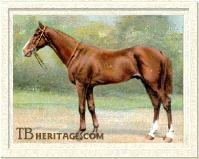
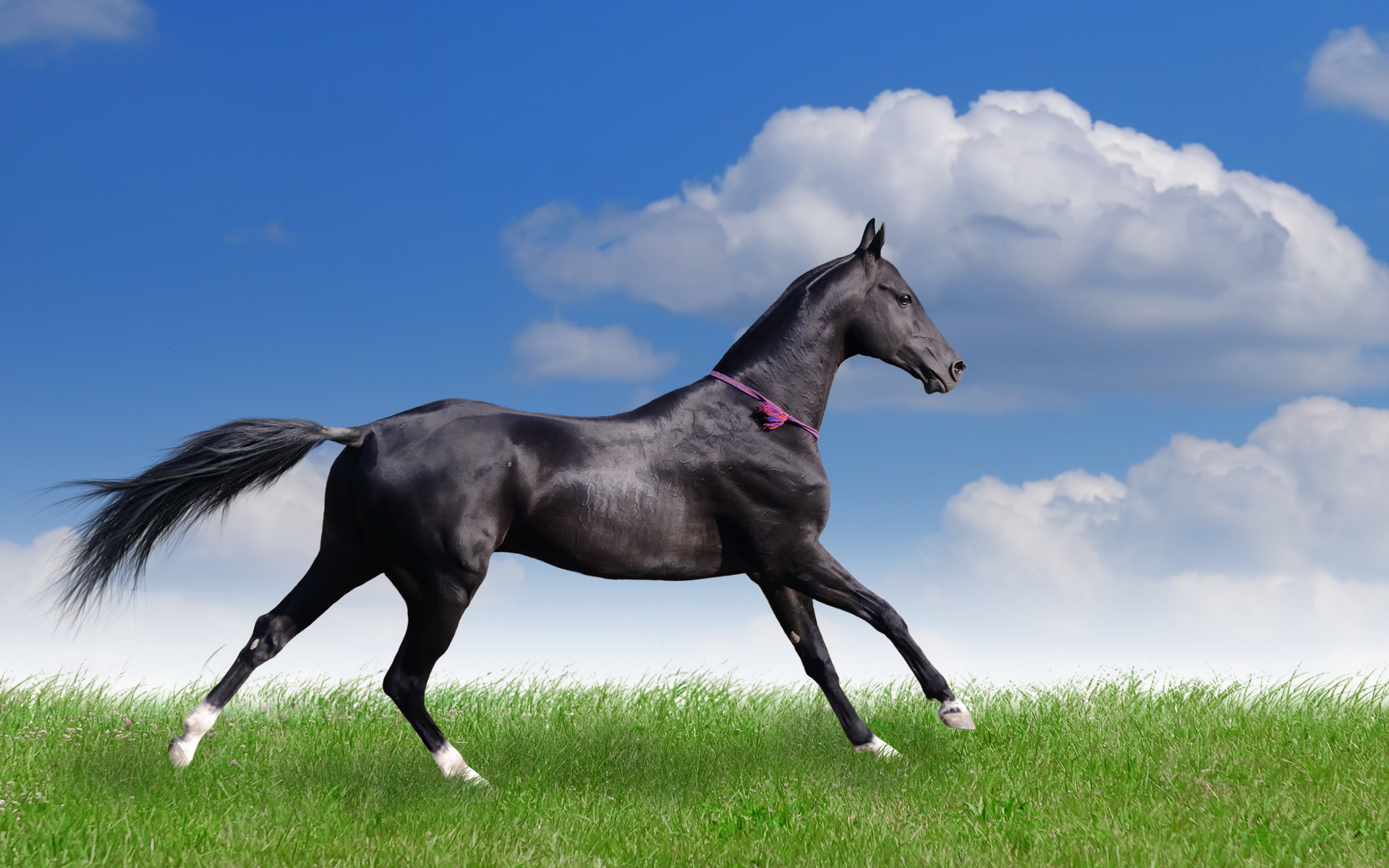
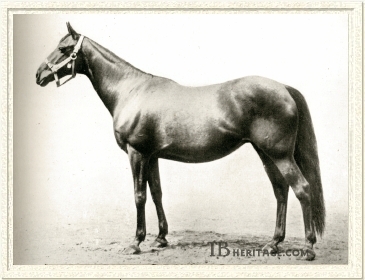
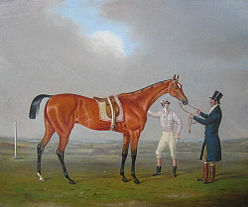
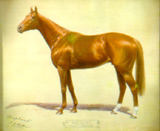
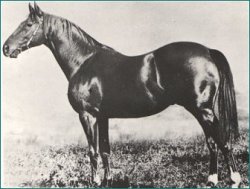
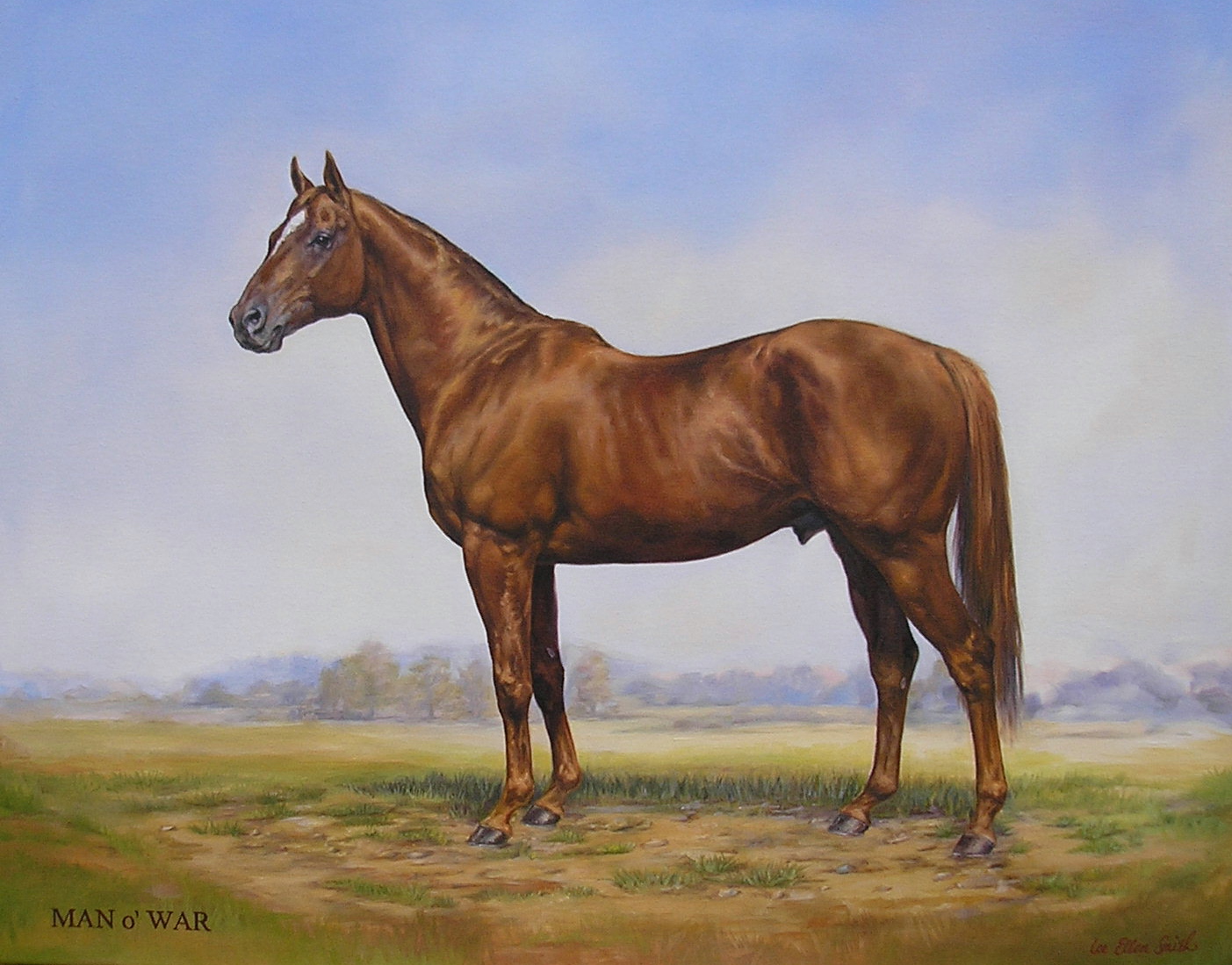
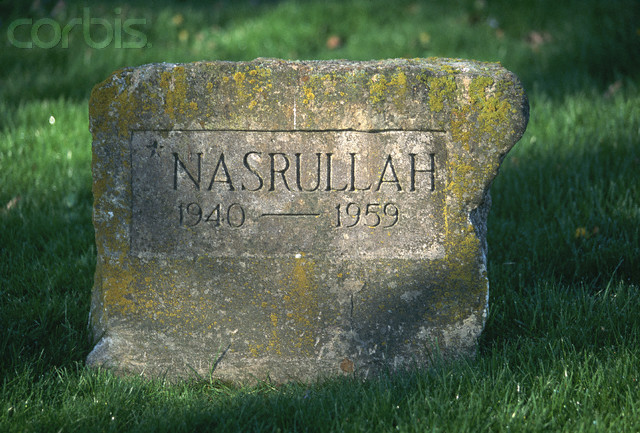



1 comment
john scott
August 25, 2014 at 7:25 pm (UTC 0) Link to this comment
Hi, Nice to see someone saying it as it is.
Although we don’t race on drugs in the UK
Soundness of stallions doesn’t seem to be taken into account.
when breeding for the sales circus.
It would be good if breeders of the future had a list of these
stallions getting unsound stock, so improvements could be made
on both sides of the pond.
What we really need is 3 or4 new Round Tables.
Best, John